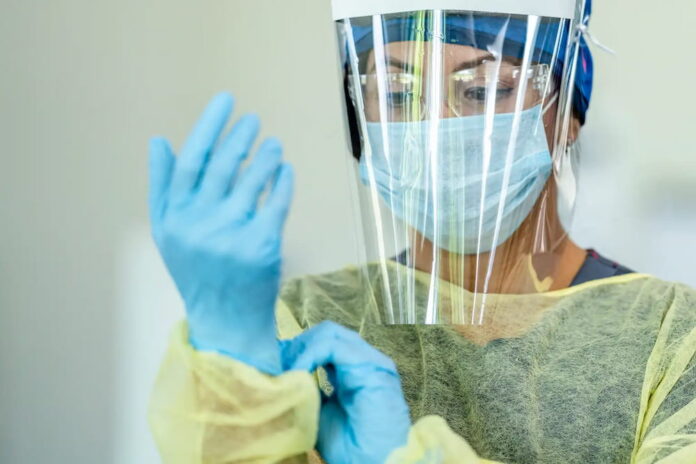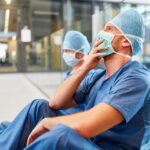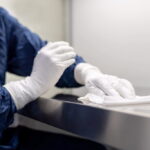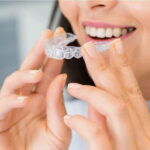Infections in healthcare settings pose a significant risk to patient safety, leading to prolonged hospital stays, increased healthcare costs, and, in some cases, death. To combat this challenge, a multifaceted approach is required, emphasizing the importance of infection prevention and control (IPC) measures. Among the most critical components of these measures is the use of essential equipment designed to prevent the transmission of pathogens. This article highlights key equipment necessary for preventing infections in healthcare environments.
Personal Protective Equipment (PPE)
Personal protective equipment (PPE) is fundamental in preventing the spread of infections within healthcare settings. PPE includes gloves, masks, gowns, face shields, and eye protection. These items act as barriers between healthcare workers and infectious agents. Surgical gloves protect against contact with bodily fluids, while masks and face shields minimize exposure to respiratory droplets. Properly fitting gowns shield the skin and clothing from contamination. Training staff on the correct use and disposal of PPE is crucial to ensure its effectiveness.
Hand Hygiene Stations
Hand hygiene is one of the most effective ways to prevent infections. Healthcare facilities must be equipped with accessible hand hygiene stations, including handwashing sinks and alcohol-based hand rub dispensers. These stations should be located strategically throughout the facility, particularly in areas such as patient rooms, nursing stations, and entrance points. Regular monitoring and replenishment of supplies are essential to encourage compliance among staff, patients, and visitors.
Sterilization and Disinfection Equipment
Instruments and surfaces in healthcare settings must be thoroughly cleaned and disinfected to eliminate pathogens. Equipment such as autoclaves, chemical disinfectant wipes, and UV light sterilizers play crucial roles in this process. Autoclaves use steam under pressure to sterilize surgical instruments, while chemical disinfectants are effective for cleaning surfaces. UV light sterilization is increasingly being used for environmental decontamination, particularly in high-risk areas like operating rooms and intensive care units.
Isolation Equipment
Infection control protocols often necessitate the use of isolation equipment for patients diagnosed with or suspected of having contagious diseases. Negative pressure rooms, which help contain airborne pathogens, are essential in treating patients with airborne infections like tuberculosis. Additionally, isolation gowns, dedicated equipment, and signage to indicate isolation precautions are vital components of infection control strategies.
Environmental Controls
Maintaining a clean environment is critical for infection prevention. Equipment such as HEPA filters and air purifiers can significantly reduce airborne contaminants in healthcare settings. Regular cleaning protocols for floors, walls, and high-touch surfaces with appropriate disinfectants also help prevent pathogen transmission. Implementing effective waste disposal systems, including sharps containers and biohazard waste bins, is essential to manage potentially infectious materials safely.
Monitoring and Surveillance Equipment
Effective infection prevention requires ongoing monitoring and surveillance. Electronic health record systems that include infection tracking capabilities can help healthcare facilities identify trends and outbreaks of infections. Regular audits and feedback systems for hand hygiene compliance and PPE usage are also crucial. Investing in technology that facilitates real-time monitoring of infection rates can enhance the effectiveness of IPC programs.
Did you find this helpful? Check out our other helpful articles on our website.
Read Also
- The Benefits of Contract Labor Staffing in HealthcareThe most successful healthcare facilities today aren’t just reacting to crises—they are building workforce resilience to withstand them. Unpredictable patient demand, coupled with persistent nursing shortages, has made the traditional staffing model obsolete. Relying on mandatory overtime to cover a sudden surge in capacity is a recipe for high turnover and rising employee burnout relief… Read more: The Benefits of Contract Labor Staffing in Healthcare
- Management Reinforcement for Healthcare Providers in a Shifting SystemHealthcare is changing faster than ever. So, providers are feeling the pressure to keep up. New technology, changing patient needs, and constant rule updates make it tough for managers to stay on top. Strong leadership helps teams work better, give great care, and stay happy in their jobs. Here’s how healthcare leaders can strengthen their… Read more: Management Reinforcement for Healthcare Providers in a Shifting System
- Why Effective Disinfection Remains the Foundation of Public HealthFrom hospitals and schools to transport hubs and food production sites, disinfection is central to breaking the chain of infection and protecting community health. The COVID-19 pandemic highlighted how crucial surface hygiene and environmental control are in reducing the spread of harmful microorganisms. Yet, beyond emergency response, routine and validated disinfection practices remain the cornerstone… Read more: Why Effective Disinfection Remains the Foundation of Public Health
- How to Navigate Your Medical Assistant Career PathBecoming a medical assistant can feel both exciting and a little stressful. This job lets you work closely with doctors and other healthcare workers to help patients. But with so many different paths to take, it can be hard to know where to start or how to plan your career. Wouldn’t it be nice to… Read more: How to Navigate Your Medical Assistant Career Path
- Benefits of Enrolling in Botox Training CoursesMany people want to enhance their skills in the beauty field, and one way to do that is through Botox training. With the rising popularity of Botox, enrolling in training courses can set you on a path to a rewarding career. If you are considering this option, you might be curious about the benefits that… Read more: Benefits of Enrolling in Botox Training Courses
- How Pilates Certification Enhances Professional Growth in HealthcareAre you looking for a way to expand your skills and stand out in healthcare? Pilates certification can be a powerful step in your professional journey. It not only helps you understand movement and body mechanics. It also gives you tools to support patient recovery. It also improves mobility, and promotes wellness. Ready to see… Read more: How Pilates Certification Enhances Professional Growth in Healthcare
- Understanding the Legality & Challenges in the Dental Aligner IndustryThe dental aligner industry has grown quickly in the past decade. More people are choosing clear aligners instead of traditional braces because they are less noticeable and often more convenient. While this growth has created new opportunities, it has also raised legal questions and practical challenges. Patients, dentists, and companies are still learning how to… Read more: Understanding the Legality & Challenges in the Dental Aligner Industry
- CPR Skills: Be Ready to Act When It Matters MostEvery year, many emergencies happen where lives are at risk and quick action is needed. One skill that can make a big difference is knowing CPR (cardiopulmonary resuscitation) and first aid. In these moments, knowing what to do can be the difference between life and death. By learning these skills, you protect yourself and become… Read more: CPR Skills: Be Ready to Act When It Matters Most









